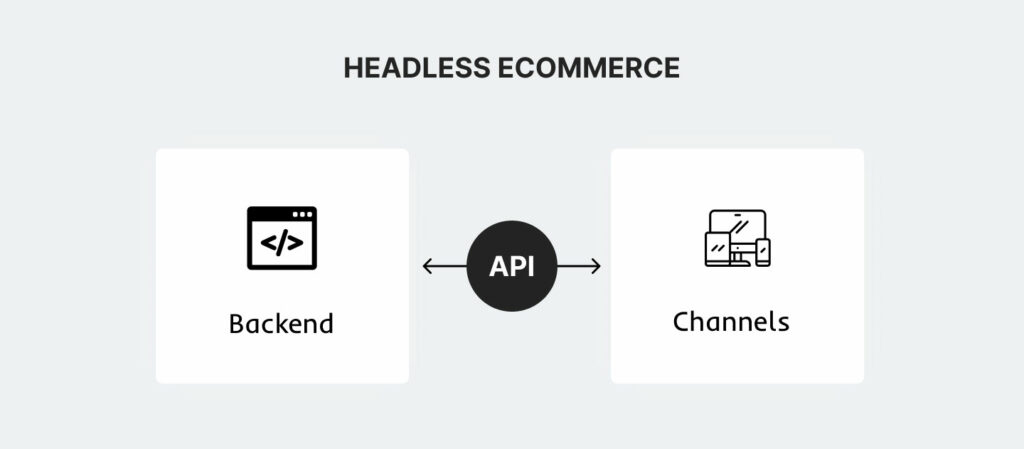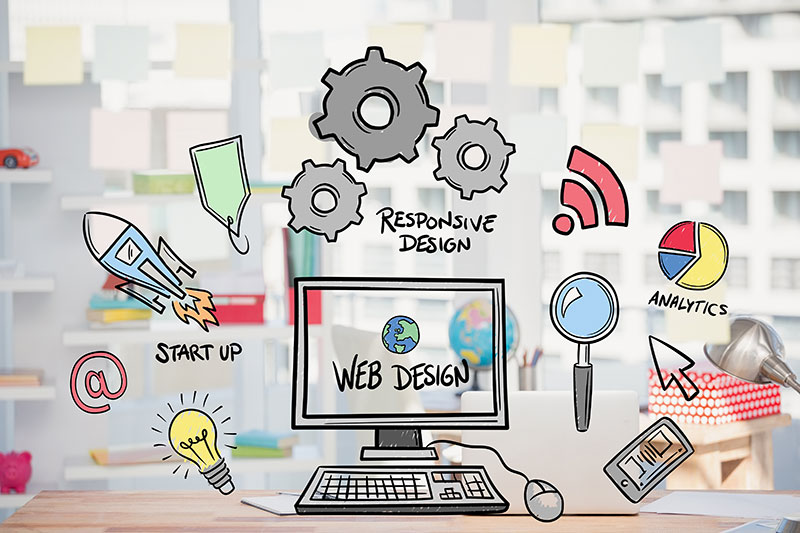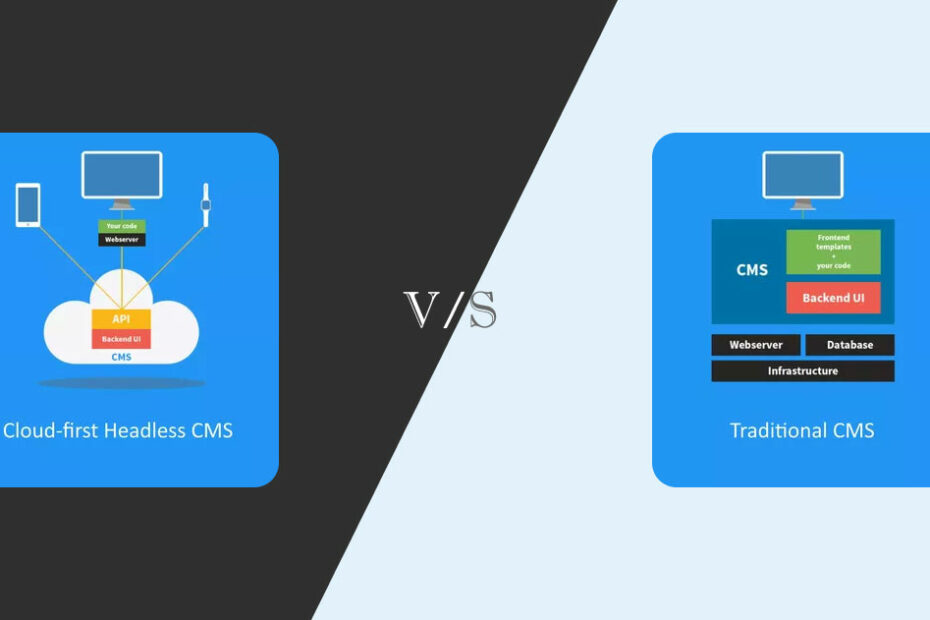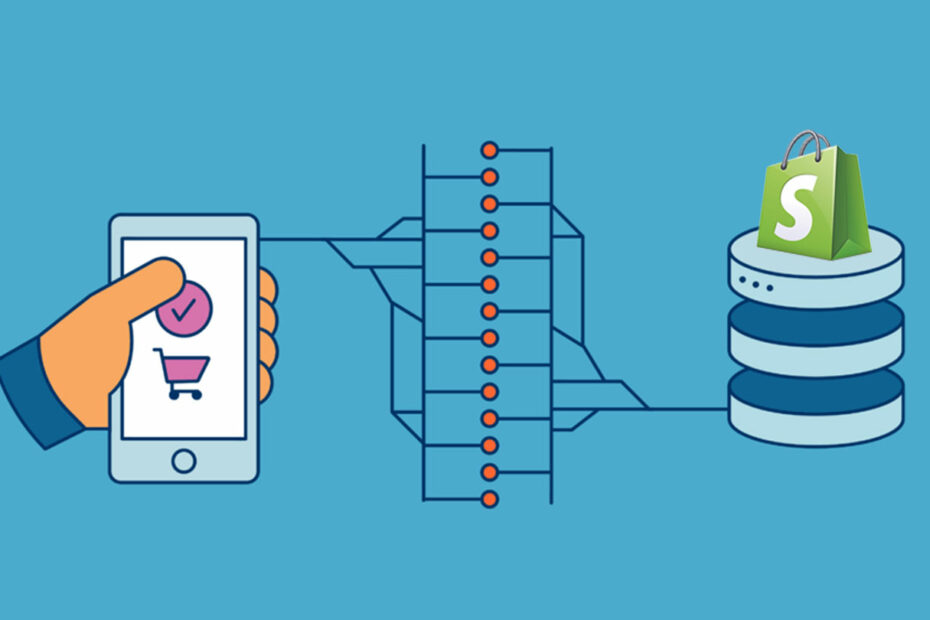Brands like Nike, Venus, ILIA, Redbox, Koala, etc are some of the popular Headless eCommerce examples that have adopted the headless architecture to improve their conversion rates and ROI. if your business is innovation-driven and scalable, then headless eCommerce unlocks potential opportunities to provide an extra edge for your business in the market.
What is traditional Commerce?
Traditional Commerce comes with a tightened front-end with back-end functionality. Any business in which people make face-to-face purchases by physically attending the store is said to be traditional Commerce. One of the crucial characteristics of traditional commerce is to provide personalized service and let the customer use all the five senses before making a purchase. This way, business owners can provide a better customer experience and maintain long-term customer relationships. Though it may sound easier, personalization in traditional commerce involves hefty costs and takes a lot of effort to make any modifications. Also due to the integrated frontend from the backend functionality, any minor changes in the front end require heavy and complex coding in the backend. Thus it makes things extremely laborious to provide personalized services to the users. Less control over the store, restricted functionalities, limited scalability, and high overhead costs have confined the potential for business expansion in the future.
The birth and rise of eCommerce
In the past few decades, the internet has penetrated into almost every field, surprisingly, even into the retail industry. Consumers are looking for fast buying, anytime accessibility to shopping products, safe delivery, etc. To match the ever-expanding demands of the consumers, the concept of eCommerce came into existence. Through the eCommerce platform, you can shop online at any time, browse through multiple digital devices, and checkout faster through digital payments. Realizing the potential of eCommerce, thousands of online stores are being launched each day. As a result, the eCommerce industry is heavily overcrowded and most of the businesses have reached saturation.
Headless eCommerce explained

Headless commerce is the separation of the back end from the front end presentation layer. But, not every business needs to go headless. There are many online businesses that operate on a traditional monolithic approach even now. The headless architecture allows you to have multiple front-end layers attached to a single backend layer. Let us look at how Headless eCommerce differs from the Traditional Commerce approach:
Headless eCommerce Vs traditional eCommerce
1. Front-end Development

In traditional eCommerce platforms, the front-end developers have less control over the store. To create personalized experiences, upgrade the store, or make any changes, the developers have to change the database and modify coding which can be risky and may lead to data loss. The decoupled front end gives full freedom to the developers to make any type of changes to the front end, any number of times without interrupting the back end infrastructure.
2. Customization and personalization
The traditional platforms come with a predefined experience both for the customers and the administrative users. There is little room for customization. If you are happy with the experience provided, then you can opt for traditional commerce. In the case of headless commerce platforms, the independent front end allows the developers to build from scratch. Thus, they have more control over what they create and can provide better user experiences by allowing utmost customization.
3. Flexibility
The flexibility of traditional commerce is limited as developers need to alter the multiple layers of coding for every single modification of the front end. Whether you want to customize the checkout process, add new functionality, or customize the web content for the user, with headless, anything is possible.
4. Better security

Because of the decoupled architecture, no one can easily access the backend systems. The headless Content Management System (CMS) also allows easy integrations with third-party applications. Thus you are less prone to DDoS attacks and using the headless CMS, you can strictly secure administrative data holding systems. Thus with headless architecture, security is highly improved.
Other benefits of headless commerce platforms
- Limitless customization is possible with the decouple headless architecture.
- The headless commerce platform lets you go Omnichannel and sell uninterruptedly across all digital platforms.
- Though headless commerce may be expensive due to high initial costs, you spend less money on sales and marketing thus saving costs in the long run.
- The faster adoption of the latest technologies, higher customization, and unlimited freedom to the developers let you create interactive experiences for the customers.
- You can attract the audience by adding discounts, special rewards, and other incentives and get higher conversion rates.
- Seamlessly integrate with the latest tools and applications and stay up-to-date with the technology.
- Allows high scalability of the businesses.
- It is easy to market and takes less time to promote your business across multiple platforms.
Conclusion
In this article, we have talked about headless eCommerce Vs traditional eCommerce. Both of them come with respective pros and cons. Based on your business type, size, and requirements, you can choose which is the best headless eCommerce platform for your business. After going through this article, you might have come to a conclusion about the eCommerce platforms. If you are still confused about what to choose for your business, contact us for assistance.



Leave a Reply